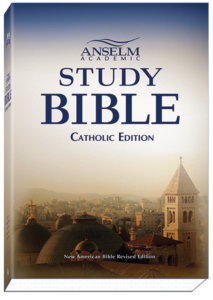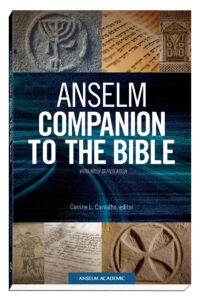Encountering Ancient Voices, Second Edition
A Guide to Reading the Old Testament
About This Book
Overview
Designed as an Introductory Core Text for Teaching College Students How to Read the Bible
Encountering Ancient Voices integrates the most recent research on the Old Testament into a historical context while keeping the focus on the text of the Bible itself.
The second edition of Corrine Carvalho’s widely popular core text maintains the features, pedagogy, and engaging style that made the first edition so effective and successful, while making this second edition even more inclusive of a religiously diverse audience. Added features include a new key to biblical texts discussed in the book, listed in canonical order. The style of the book remains as engaging and accessible as the original, bringing the stories of the Old Testament to life.
Flexible, understandable, and informed by best teaching practices, Encountering Ancient Voices features chapter overviews and summaries, guided readings and unique sidebars for unpacking key biblical texts, and an inviting narrative voice that will engage readers’ interest while inviting them to connect theological questions to their everyday world. With its focus on active learning techniques throughout, it’s an approach that empowers students to read the Old Testament on their own.
Details
| Weight | 1.8 lbs |
|---|---|
| Dimensions | 7.25 × 1.5 × 9.125 in |
| Format | Softcover |
| Print ISBN | 978-1-59982-050-7 |
| Pages | 502 |
| Item # | 7026 |
|---|
Customer Reviews
“Full of useful information, clearly and cleverly presented, Encountering Ancient Voices is a wonderful tool around which to build an introductory class in the Hebrew Bible. I find it to be the most useful and engaging among the introductions I have assigned. Finally, Professor Carvalho has a great sense of humor, making the book fun to read.”
University of Saint Thomas
Saint Paul, MN
“Encountering Ancient Voices makes an invaluable contribution to undergraduate biblical studies, especially for students who are studying the Bible as part of their core curriculum. The book’s format is exceptionally helpful, especially the discussions of biblical passages, but also the charts, sidebars, overviews, and summaries. The writing style is engaging: I find students regularly ‘interacting’ with Carvalho, whom I consider something of a ‘co-teacher’ in the course. I appreciate the range of Carvalho’s discussions, especially on biblical methodologies, themes, or issues, as well as on current issues related to Bible interpretation or to specific texts. This book helped me achieve my best effort ever in teaching this course.”
Loyola University New Orleans
“Carvalho’s text includes everything I want in terms of content and substantive issues, and it provides wonderful guided readings of numerous biblical texts. Students have been responding very well to it; they appreciate the insight it offers and the things it brings to their attention that they never noticed before. I have used several different texts since I started teaching our new ‘History and Literature of the Old Testament’ course, but I haven’t used the same one for more than one semester. Now I think I have found the book I’m going to stick with!
Anderson University
“Many of my students express how much they enjoy reading this book. At the same time, it is filled with new interpretive insights which the author guides us through in such inviting ways. Combined with both up-to-date scholarship and ecumenical sensitivity, the book is indeed a remarkable accomplishment.”
in the Williams Chair of Biblical Studies
Methodist Theological School in Ohio
“[First Edition] This work’s greatest strength is its combination of a sophisticated approach to the biblical text and a style and format that will appeal to college undergraduates. The work’s focus on the biblical text itself is admirable, and the author has managed to bring together a solid grounding in modern biblical scholarship with a sure feel for her intended audience.”
“[First Edition] This seems like a real winner. I’m anxious to try it with my students. The scholarship of this manuscript goes far beyond being ‘sound.’ What this author is sharing with her audience is the best of most recent scholarship. And it is explained with such clarity. . . In a very few words, the author gives students access to the ancient near eastern world and the world of the Bible. . . It will help students to understand what they are reading in the Bible (but they will still have to and want to read the Bible).”
Table of Contents
Introduction for the Instructor
Why Another Old Testament Textbook?
1. Cracking Open a Dusty Old Book
Why Study the Old Testament?
Where Was Ancient Israel Located?
The History of the Bible
Didn’t God Write the Bible?
How Should We Interpret Scripture?
How Is the Textbook Arranged?
2. The Patriarchs and Matriarchs
Genesis at a Glance
The Story behind the Story
The World of Genesis 12–50
Abraham and Sarah
Summary: Who Are Abraham and Sarah?
The Patriarchs, the Sequel: Isaac, Jacob, and Joseph
Summary: God and the Founders
3. The Exodus
What’s the Book of Exodus?
Reading Exodus
Summary: God, the Liberator
4. The Sinai Covenant
Reading the Law through a Contemporary Lens
Reading the Law
Summary: Holiness, Loyalty, and Love
Overview: A Veil of Tears
5. Conquest and Confusion: Joshua and Judges
A Doomed History
Stories of Victory and Failure
Summary: The Rhetorical Force of the Deuteronomistic History
6. The Rise of the Monarchy: 1 and 2 Samuel
To Have a King or Not to Have a King: That Is the Question
Stories of the United Monarchy
Summary: The King as the Father of the Nation
7. The Politics of the Monarchy
The Nation of Israel
The Politics of the Monarchy: Reading the Book of Kings
Summary: A Failed History Revisited
8. Israelite Poetry: Psalms and Song of Songs
Israelite Poetry
The Psalms
Song of Songs
Summary: God is Present in Joy and Suffering
9. The Prophets of the Divided Monarchy
Defining the Prophets
Reading about the Prophets: The Elijah Stories
Reading Prophetic Books
Summary: Prophets Then and Now
10. Judah Stands Alone
Isaiah: Fitting Assyria into God’s Plan
Micah: The Prophet from Moresheth
Summary: Chastisement as a Confession of Faith
11. Why, Oh Lord?
The Literature of the Exile
Jeremiah: Siege and Destruction
Lamentations
Ezekiel: Watching the Whirlwind
Summary: Great Loss, Great God
Overview: The Second Temple Period
12. Restoring a Nation
A Chance to Set Things Right
Texts from the Restoration
Histories of the Restoration: Chronicles, Ezra, and Nehemiah
Rewriting History, Envisioning a Future
13. The Wise Shall Behold All of Creation
Where Is Wisdom Found?
The Wisdom of Creation
Summary: The Wisdom of God’s Creation
14. A Nice Little Story
The Art of the Storyteller
Telling Stories
Ruth: A Righteous Woman
Jonah: The Reluctant Prophet
Esther: Queen of Persia
Tobit: The Afflicted
Judith: The Warrior
15. An Orchestra of Voices
Unity and Diversity in Scripture
Introducing Counter Melodies
Elements of Apocalyptic
Summary: Theodicy, Despair, and Hope
Epilogue
Cracking Open a Familiar Book
What Have I Learned?
Reading with the Christian Community
Glossary
Appendix: Maps
Discussions of Biblical Texts in Canonical Order






